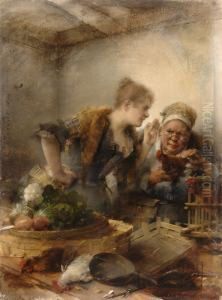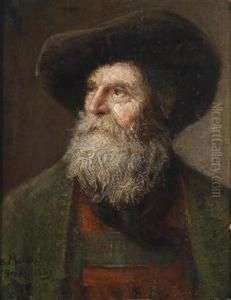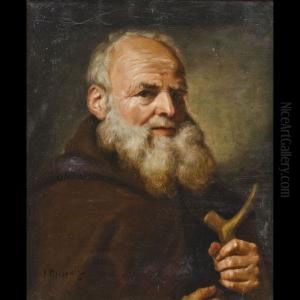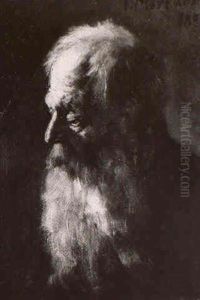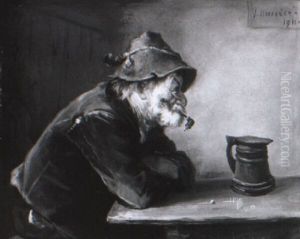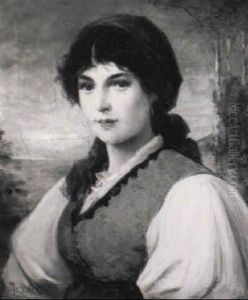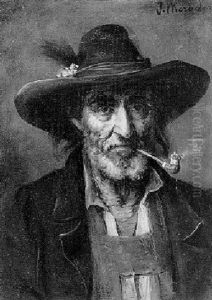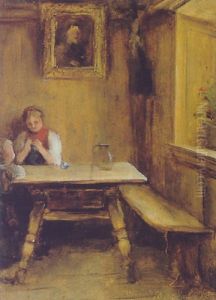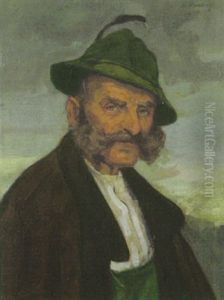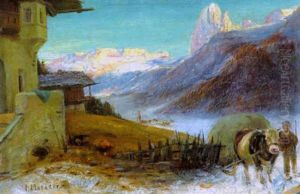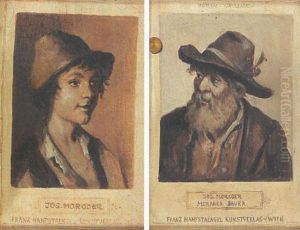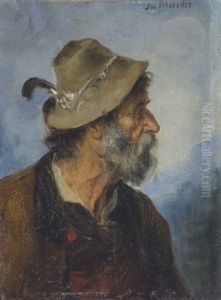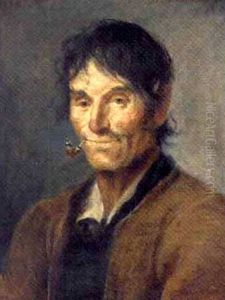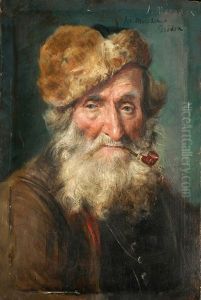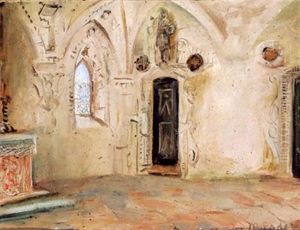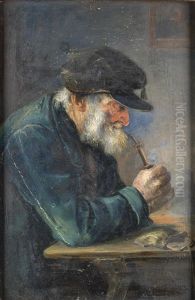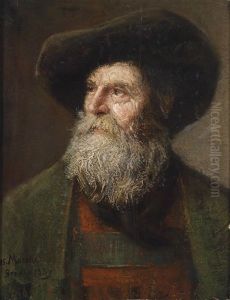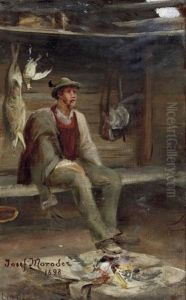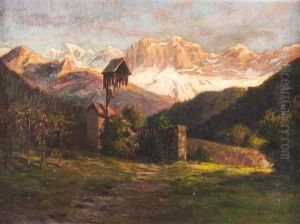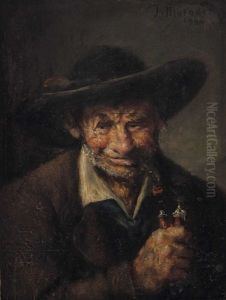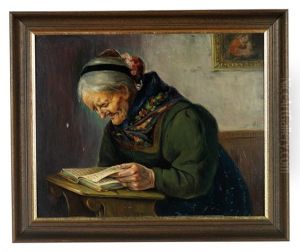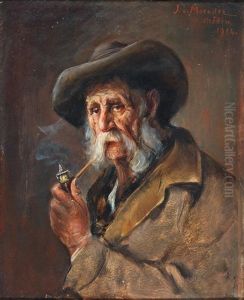Josef Theodor Moroder-Lusenberg Paintings
Josef Theodor Moroder, also known as Josef Moroder-Lusenberg, was a significant figure in the world of art, particularly in the region of the Dolomites, in what is now Italy. Born on February 24, 1846, in Urtijëi (Ortisei) in Val Gardena (Gröden), he was part of a region with a rich tradition in woodcarving and sculpture. Moroder-Lusenberg became one of the most influential artists of his time, bridging traditional woodcarving craftsmanship with the emerging styles of the late 19th and early 20th centuries.
His early life was deeply rooted in the Ladin culture of the Dolomites, and he was part of a family that was already well-established in the arts, particularly in wood sculpture. This cultural and familial background provided a fertile ground for his artistic development. Moroder-Lusenberg displayed an exceptional talent in woodcarving from a young age and was keen on elevating this traditional craft to a fine art. He pursued formal training in Munich, which was a center for art and culture in Germany at the time. This education exposed him to various artistic movements and techniques, which he skillfully integrated into his work upon returning to his native Val Gardena.
Throughout his career, Josef Theodor Moroder-Lusenberg was prolific in his output, creating a wide array of works ranging from religious figures to more secular themes. His sculptures are noted for their intricate detail, expressive faces, and the ability to convey deep emotion and spirituality. Beyond woodcarving, he also engaged in painting and architecture, showcasing his versatility as an artist. His works contributed significantly to the development of the Art Nouveau movement in the region, and he played a crucial role in establishing the Val Gardena as a recognized center for art and sculpture.
Moroder-Lusenberg's impact extended beyond his artistic contributions. He was a mentor to younger artists and played a significant role in the cultural life of Val Gardena, promoting the arts and Ladin culture. His legacy is preserved in the Museum Gherdëina in Ortisei, where many of his works are displayed, offering insight into his creative genius and the artistic heritage of the Dolomites.
Josef Theodor Moroder-Lusenberg passed away on August 22, 1939, leaving behind a rich legacy that continues to inspire artists and art lovers. His life and work remain a testament to the blending of tradition and innovation, and his contributions have had a lasting impact on the art and culture of the Dolomites.
